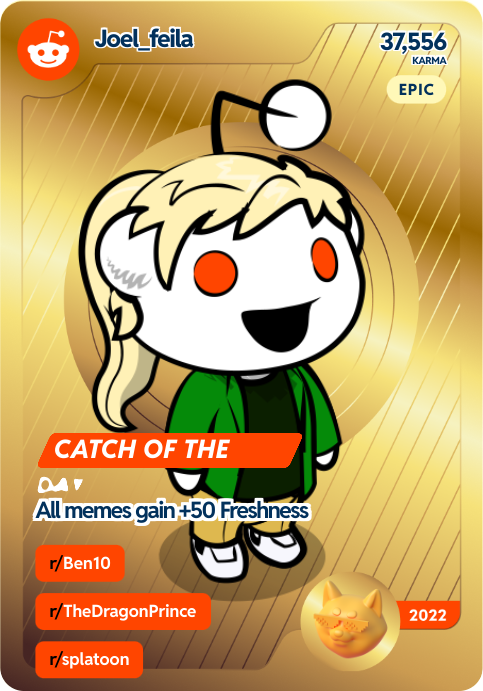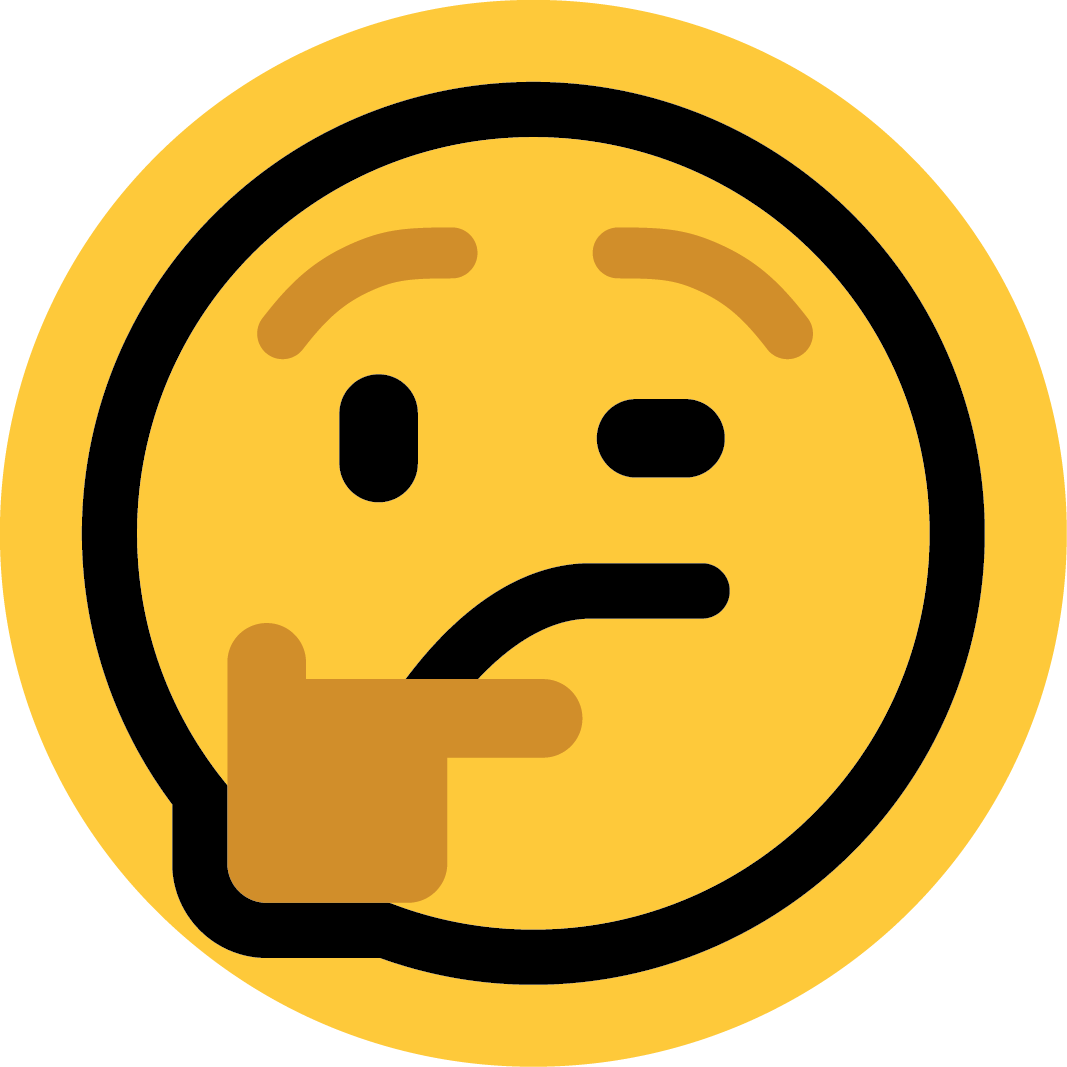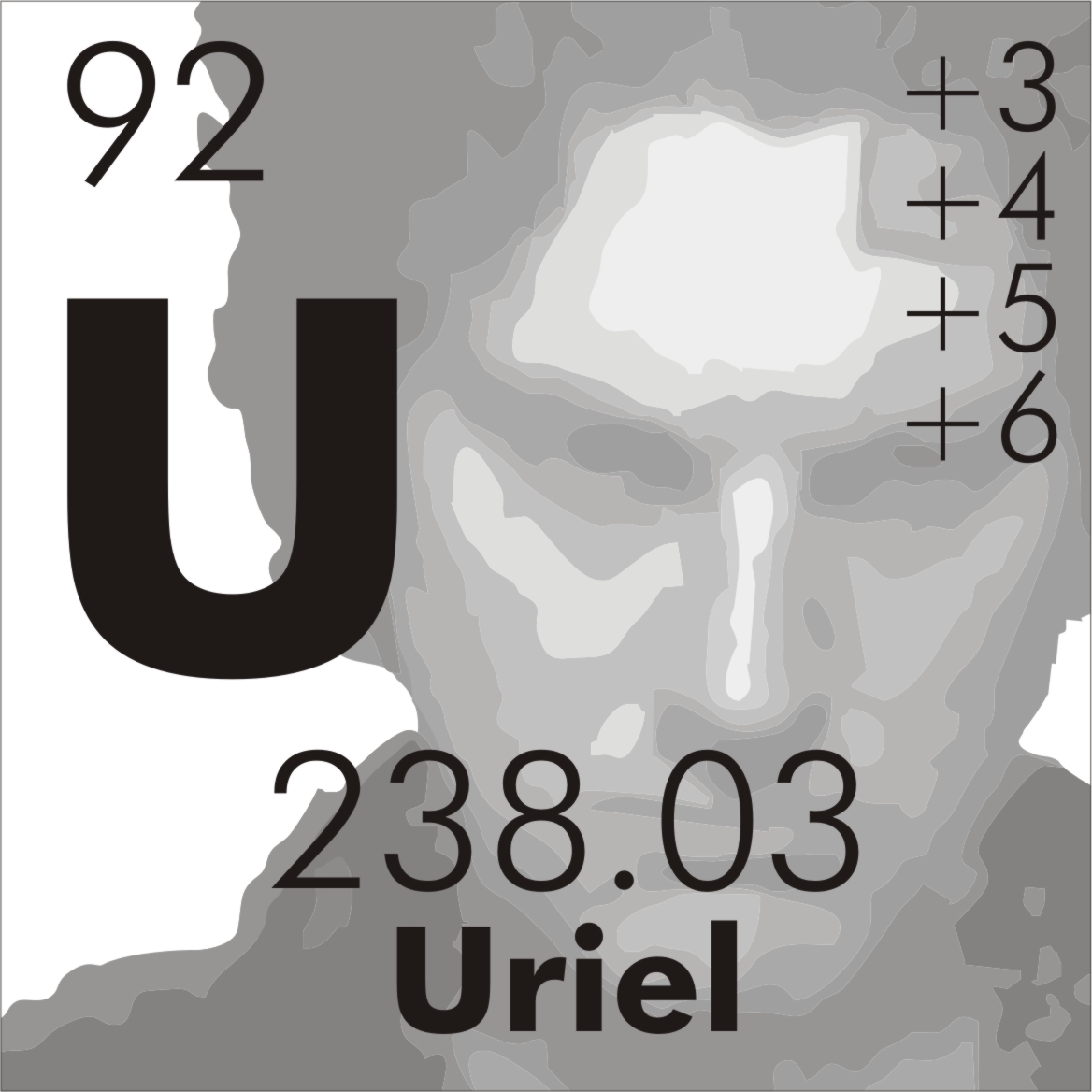A new tool lets artists add invisible changes to the pixels in their art before they upload it online so that if it’s scraped into an AI training set, it can cause the resulting model to break in chaotic and unpredictable ways.
The tool, called Nightshade, is intended as a way to fight back against AI companies that use artists’ work to train their models without the creator’s permission.
[…]
Zhao’s team also developed Glaze, a tool that allows artists to “mask” their own personal style to prevent it from being scraped by AI companies. It works in a similar way to Nightshade: by changing the pixels of images in subtle ways that are invisible to the human eye but manipulate machine-learning models to interpret the image as something different from what it actually shows.
It’s made by Ben Zhao? You mean the “anti AI plagerism” UChicago professor who illegally stole GPLv3 code from an open source program called DiffusionBee for his proprietary Glaze software (reddit link), and when pressed, only released the code for the “front end” while still being in violation of GPL?
The Glaze tool that promised to be invisible to the naked eyes, but contained obvious AI generated artifacts? The same Glaze that reddit defeated in like a day after release?
Don’t take anything this grifter says seriously, I’m surprised he hasn’t been suspended for academic integrity violation yet.
Thanks for added background! I haven’t been monitoring this area very closely so wasn’t aware, but I’d have thought a publication that has been would then be more skeptical and at least mention some of this, particularly highlighting disputes over the efficacy of the Glaze software. Not to mention the others they talked to for the article.
Figures that in a space rife with grifters you’d have ones for each side.
Don’t worry, it is normal.
People don’t understand AI. Probably all articles I have read on it by mainstream media were somehow wrong. It often feels like reading a political journalist discussing about quantum mechanics.
My rule of thumb is: always assume that the articles on AI are wrong. I know it isn’t nice, but that’s the sad reality. Society is not ready for AI because too few people understand AI. Even AI creators don’t fully understand AI (this is why you often hear about “emergent abilities” of models, it means “we really didn’t expect it and we don’t understand how this happened”)
Probably all articles I have read on it by mainstream media were somehow wrong. It often feels like reading a political journalist discussing about quantum mechanics.
Yeah, I view science/tech articles from sources without a tech background this way too. I expected more from this source given that it’s literally MIT Tech Review, much as I’d expect more from other tech/science-focused sources, albeit I’m aware those require scrutiny just as well (e.g. Popular Science, Nature, etc. have spotty records from what I gather).
Also regarding your last point, I’m increasingly convinced AI creators’ (or at least their business execs/spokespeople) are trying to have their cake and eat it too in terms of how much they claim to not know/understand how their creations work while also promoting how effective it is. On one hand, they genuinely don’t understand some of the results, but on the other, they do know enough of how it works to have an idea of how/why those results came about, however it’s to their advantage to pretend they don’t insofar as it may mitigate their liability/responsibility should the results lead to collateral damage/legal issues.
By that logic humanity isnt ready for personal computers since few understand how they work.
Kind of true. Check the law proposals on encryption around the world…
Technology is difficult, most people don’t understand it, result is awful laws. AI is even more difficult, because even creators don’t fully understand it (see emergent behaviors, i.e. capabilities that no one expected).
Computers luckily are much easier. A random teenager knows how to build one, and what it can do. But you are right, many are not yet ready even for computers
I read an article the other day about managers complaining about zoomers not even knowing how type on a keyboard.
That was certainly true in the 90s. Mainstream journalism on computers back then was absolutely awful. I’d say that only changed in the mid-2000 or 2010s. Even today, tech literacy in journalism is pretty low outside of specialist outlets like, say, Ars.
Today I see the same thing with new tech like AI.
who illegally stole GPLv3 code from an open source program called DiffusionBee for his proprietary Glaze software (reddit link), and when pressed, only released the code for the “front end” while still being in violation of GPL?
Oh, how I wish the FSF had more of their act together nowadays and were more like the EFF or ACLU.
You should check out the decompilation they did on Glaze too, apparently it’s hard coded to throw out a fake error upon detecting being ran on an A100 as some sort of anti-adversarial training measure.
That’s hilarious, given that if these tools become remotely popular the users of the tools will provide enough adversarial data for the training to overcome them all by itself, so there’s little reason to anyone with access to A100’s to bother trying - they’ll either be a minor nuisance used a by a tiny number of people, or be self-defeating.
Thank you, Margot Robbie! I’m a big fan!
You’re welcome. Bet you didn’t know that I’m pretty good at tech too.
Also, that’s Academy Award nominated character actress Margot Robbie to you!
deleted by creator
Oh no, another complicated way to jpeg an image that an ai training program will be able to just detect and discard in a week’s time.
They don’t even need to detect them - once they are common enough in training datasets the training process will “just” learn that the noise they introduce are not features relevant to the desired output. If there are enough images like that it might eventually generate images with the same features.
Here’s the paper: https://arxiv.org/pdf/2302.04222.pdf
I find it very interesting that someone went in this direction to try to find a way to mitigate plagiarism. This is very akin to adversarial attacks in neural networks (you can read more in this short review https://arxiv.org/pdf/2303.06032.pdf)
I saw some comments saying that you could just build an AI that detects poisoned images, but that wouldn’t be feasible with a simple NN classifier or feature-based approaches. This technique changes the artist style itself to something the AI would see differently in the latent space, yet, visually perceived as the same image. So if you’re changing to a different style the AI has learned, it’s fair to assume it will be realistic and coherent. Although maaaaaaaybe you could detect poisoned images with some dark magic tho, get the targeted AI then analyze the latent space to see if the image has been tampered with
On the other hand, I think if you build more robust features and just scale the data this problems might go away with more regularization in the network. Plus, it assumes you have the target of one AI generation tool, there are a dozen of these, and if someone trains with a few more images in a cluster, that’s it, you shifted the features and the poisoned images are invalid
Trying to detect poisoned images is the wrong approach. Include them in the training set and the training process itself will eventually correct for it.
I think if you build more robust features
Diffusion approaches etc. do not involve any conscious “building” of features in the first place. The features are trained by training the net to match images with text features correctly, and then “just” repeatedly predict how to denoise an image to get closer to a match with the text features. If the input includes poisoned images, so what? It’s no different than e.g. compression artifacts, or noise.
These tools all try to counter models trained without images using them in the training set with at most fine-tuning, but all they show is that models trained without having seen many images using that particular tool will struggle.
But in reality, the massive problem with this is that we’d expect any such tool that becomes widespread to be self-defeating, in that they become a source for images that will work their way into the models at a sufficient volume that the model will learn them. In doing so they will make the models more robust against noise and artifacts, and so make the job harder for the next generation of these tools.
In other words, these tools basically act like a manual adversarial training source, and in the long run the main benefit coming out of them will be that they’ll prod and probe at failure modes of the models and help remove them.
Just to start with, not very experienced with neural networks at all beyond messing with openCV for my graduation project.
Anyway, that these countermeasures expose “failure modes” in the training isn’t a great reason to stop doing this, e.g. scammers come up with a new technique, we collectively respond with our own countermeasures.
If the network feedbacks itself, then cool! It has developed its own style, which is fine. The goal is to stop people from outright copying existing artists style.
It doesn’t need to “develop its own style”. That’s the point. The more examples of these adversarial images are in the training set, the better it will learn to disregard the adversarial modifications, and still learn the same style. As much as you might want to stop it from learning a given style, as long as the style can be seen, it can be copied - both by humans and AI’s.
There’s a lot of interesting detail to your side of the discussion I may not yet have the knowledge of. How does the eye see? We find edges, gradients, repeating patterns which become textures, etc etc… But our systems can be misdirected, see the blue/yellow dress for example. NNsbhave the luxury of being rapidly iterated I guess, compared to our lifespans.
I’m asking questions I don’t know answers to here: if the only source of input data for a network is subtly corrupted, won’t that guarantee corrupted output as well? I don’t see how one can “train out” the corruption which misdirects the network without access to some pristine data.
Don’t get me wrong, I’m not naive enough to believe this is foolproof, but I do want to understand why this technique doesn’t actually work, and by extension better understand how training a nn actually works.
if the only source of input data for a network is subtly corrupted, won’t that guarantee corrupted output as well?
We have to distinguish between different kinds of “corruption”, here. What you seem to be describing is “if we only feed the model data from rule34, will it ever learn proper human anatomy” and the answer is no, it won’t. You’ll have to add data which narrows the range of body proportions from cartoonish to, well, real. That’s an external source of corruption: Feeding it bad data (for your own definition of “bad”). Garbage in, garbage out.
The corruption that these adversarial models are exploiting though is inherent in the model they’re attacking. Take… ropes and snakes and cats (or, generally, mammals). Good example: It is incredibly easy for a cat to mistake a rope for a snake – it looks exactly the same to the first layers of the visual cortex and evolution would rather have the cat jump away as soon as possible than be bitten, and it doesn’t hurt to jump away from a rope (even though the cat might end up being annoyed or ashamed (yes cats can 110% be self-conscious different story)), so when there’s an unexpected wiggly shape the first layers directly tell the motor cortex to move, short-circuiting any higher processing.
That trait has been written into the network by evolution, very similar to how we train AI models – conceptually, that is: In both cases the network gets trained for fitness for a purpose (the implementation details are indeed rather different but also irrelevant):
What those adversarial models do kinda looks like this: Take a picture of a rope. Now randomly shift pixels to make the rope subtly more snake-like until you get your cat to jump as reliably as possible, in as many different situations as possible, e.g. even if they’re expecting it and staring straight at it. Sell the product for a lot of money. People start posting pictures of ropes, rope manufacturers adjust their weaving patterns. Other cats see those pictures and ropes, some jump, and others only feel a bit, or a lot, uneasy. The ones that jump will not be able to procreate, any more, being busy jumping, while the uneasy ones will continue to evolve. After a couple of generations no cat cares about those ropes with shifted pixels any more.
Whether that trains general immunity against adversarial attacks – I wouldn’t be so sure. It very likely will make the rope/snake distinction more accurate. But even if it doesn’t build general immunity, it’s an eternal cat and mouse game and no artist will be willing to continue paying for that kind of software when it’s going to get defeated within days, anyway, because that’s just how fast we can evolve models.
Oh. Back to the definition of corruption: If all the pictures of rope that our models ever see have shifted pixels then it’s just going to assume that is the norm, and distinguish it from snakes because the tags say “rope” in one case, and “snake” in the other. The original un-shifted pictures probably won’t be an adversarial attack because they’re not a product of trying to get cats to jump.
Quick iteration is definitely the big thing. (The eye is fun because it’s so “badly designed” - we’re stuck in a local maxima that just happens to be “good enough” for us to not overcome the big glaring problems)
And yes, if all the inputs are corrupted, the output will likely be too. But 1) they won’t all be, and as long as there’s a good mix that will “teach” the network over time that the difference between a “corrupted cat” and an “uncorrupted cat” are irrelevant, because both will have most of the same labels associated with them. 2) these tools work by introducing corruption that humans aren’t meant to notice, so if the output has the same kind of corruption it doesn’t matter. It only matters to the extent the network “miscorrupts” the output in ways we do notice enough so that it becomes a cost drag on training to train it out.
But you can improve on that pretty much with feedback: Train a small network to recognize corruption, and then feed corrupted images back in as negative examples to teach it that those specific things are particularly bad.
Picking up and labelling small sample sets of types of corruption humans will notice is pretty much the worst case realistic effect these tools will end up having. But each such countermeasure will contribute to training sets that make further corruption progressively harder. Ultimately these tools are strictly limited because they can’t introduce anything that makes the images uglier to humans, and so you “just” need to teach the models more about the limits of human vision, and in the long run that will benefit the models in any case.
Haven’t read the paper so not sure about the specifics, but if it relies on subtle changes, would rounding color values or down sampling the image blur that noise away?
Wondering the same thing. Slight loss of detail but still successfully gets the gist of the original data.
For that matter, how does the poisoning hold up against regular old jpg compression?
Eta: read the paper, they account for this in section 7. It seems pretty robust on paper, by the time you’ve smoothed out the perturbed pixels, youve also smoothed out the image to where the end result is a bit of a murky mess.
This is cool. I think generative AI is great, but the way it’s being trained right now largely without consent from the artists or subjects is unequivocally unethical. Until the law catches up with the technology, people need ways of protecting themselves.
I don’t see a problem with it training on all materials, fuck copyright. I see the problem in it infringing on everyone’s copyright and then being proprietary, monetized bullshit.
If it trains on an open dataset, it must be completely and fully open. Everything else is peak capitalism.
You’re not owed nor entitled to an artist’s time and work for free.
Of course not, it’s the artists decision to put it on the internet for free.
Technically that’s the root of the issue. This does not grant a license to everyone who looks at it, but if a license is required to train a model is unclear and currently discussed in court.
The problem is the only way for artists to get people to see and eventually buy their art or commissions is to post some of their work publicly. Historically you would go out on the street and set up a stall, now social media is our digital street. Galleries don’t take everyone, having the ability to even get a meeting with one is difficult without the right connections. Most artists are never successful enough to completely live off their art, if they can make any money at all it is great for them. Then along comes an AI model that takes their work because it’s on the internet scrapes it into its training set and now any chance they had in an over saturated market is even smaller, because hey, I can just do this with AI. This idea that copyright and IP shouldn’t exist at all is kinda absurd. Would you just go through a street art walk, take high res photos of every picture they have on display, not take any business cards, and when they ask what you are doing, go “it’s ok, I’m training an AI data model so people can just make work that looks exactly like this. They shouldn’t have to ever buy from you. Capitalism is a joke. Bye!” The art walk was free, but it was also a sales pitch, because that’s how the art world works. You are hoping to get seen, that someone likes it enough to buy, and maybe buy more.
This idea that copyright and IP shouldn’t exist at all is kinda absurd.
For the majority of human existence, that was the default.
Copyright exists as an explicit tradeoff between the rights of the public to be able to do as they please with stuff introduced into the public sphere, and a legal limitation infringing on the publics liberty for a limited time for the purpose of encouraging the creation of more works for the public benefit. It was not introduced as some sort of inherent right, but as a trade between the public and creators to incentivise them.
Stripping it away from existing artists who has come to depend on it without some alternative would be grossly unfair, but there’s nothing absurd about wanting to change the bargain over time. After all, that has been done many times, and the copyright we have now is vastly different and far more expansive and lengthy than early copyright protection.
Personally, I’d be in favour of finding alternative means of supporting creators and stripping back copyright as a tradeoff. The vast majority of creators earn next to nothing from their works; only a very tiny minority makes a livable wage of art of any form at all, and of the rest the vast majority of profits take place in a very short period of initial exploitation of a work, so we could allow the vast majority to earn more from their art relatively cheaply, and affect the rest to a relatively limited degree, while benefiting from the reduced restrictions.
I agree that copyright lasts far too long, but the idea I can post a picture today, and in a hour it’s in an AI model without my consent bothers me. Historically there was a person to person exchange. But now we are so detached from it all I don’t think we can have that same affordance of no types of protections. I’m not saying one person can solve this. But I don’t see UBI or anything like that ever happening. As a person who has lived on disability most of their life, people don’t like to share their wealth with anyone for any reason. I’ve never been able to sell art for a living and am now going to school for data science. So I know about both ends of this. Just scraping without consent is unethical and many who do this have no idea about the art world or how artist create in general.
I doesn’t need to be full on UBI. In a lot of countries grants mechanisms and public purchasing mechanisms for art already make up a significant proportion of income for artists. Especially in smaller countries, this is very common (more so for literary works, movies and music where language provides a significant barrier to accessing a bigger audience, but for other art too). Imagine perhaps a tax/compulsory licensing mechanism that doesn’t stop AI training but instead massively expands those funding sources for people whose data are included in training sets.
This is not stoppable, not least because it’s “too cheap” to buy content outright.
I pointed out elsewhere that e.g. OpenAI could buy all of Getty Images for ~2% of their currently estimated market cap based on a rumoured recent cash infusion. Financing vast amounts of works for hire just creates a moat for smaller players while the big players will still be able to keep improving their models.
As such it will do nothing to protect established artists, so we need expansion of ways to fund artists whether or not inclusion of copyrighted works in training sets becomes restricted.
This idea that copyright and IP shouldn’t exist at all is kinda absurd
I don’t hold this opinion at all.
I’m just saying that there are uses for which you don’t need a license. Say, visiting an art exhibition and then going home and trying to draw similar pictures. Wether AI training falls into this category or instead requires a license is currently unclear.
Btw, two spaces before the line break
Creates the spacing you want.As an artist who studies data science, I would say doing art and generating art are an entirely different process. AI has no reference outside of the information we give it. It had no real understanding of lighting, spacial awareness. We can tell it every tank is a cat, every flashlight is a pig and it will never question it. If we tell a toddler that every tank is a cat, they may call a tank a cat, but they will never think a that “cat” is a house pet. They will never think that “pig” will oink or be turned into steaks. An AI however would if your language conventions were the same in the prompt.
If you go to the art walk and go home and try to recreate a style, you were inspired. If an AI model is trained on many styles and you tell it “portrait, woman, Van Gogh style, painterly, blue tones” then do you understand what you asked for? Was the ai inspired by Van Gogh? Did the ai study his techniques? No. It broke down his art pixel by pixel, rearranged it in a filter styled overlay over a woman, most likely a young woman-because of algorithmic bias which has been studied- in shades of blue. Humans take the time to study the why, the how. Ai does not. Humans are not just meat robots.
I should say I’m not against AI art. I’m against gathering against consent. If it was opt in, or if there was some type of pay for program that would be fine. Even if it was pennies each month. But the fact that they scrape without consent. Or are now going back and adding it into TOS where it never was before feels scummy. AI art has a place, and is a helpful tool. But it’s not a replacement for artists, it has many flaws still, that might never be worked out.
Thank you for helping me with line break.
I am perfectly entitled to type random stuff into google images, pick out images for a mood board and some as reference, regardless of their copyright status, thank you. Studying is not infringement.
It’s what every artist does, it’s perfectly legal, and what those models do is actually even less infringing because they’re not directly looking at your picture of a giraffe and my picture of a zebra when drawing a zebra-striped giraffe, they’re doing it from memory.
Art takes effort. You’re not entitled to that for free.
And if you think that working with AI does not take effort you either did not try, or don’t have an artistic bone in your body. Randos typing “Woman with huge bazingas” into an UI and hitting generate don’t get copyright on the output, rightly so: Not just did they not do anything artistic, they also overlook all the issues with whatever gets generated because they lack the trained eye of an artist.
Until the law catches up with the technology, people need ways of protecting themselves.
I agree, and I wonder if the law might be kicked into catching up quicker as more companies try to adopt these tools and inadvertently infringe on other companies’ copyrighted material. 😅
How is training AI with art on the web different to a person studying art styles? I’d say if the AI is being monetized in some capacity, then sure maybe there should be laws in place. I’m just hard-pressed to believe that anyone can have sole control of anything once it gets on the Internet.
I work in AI and I believe it is different. Society is built to distribute wealth, so that everyone can live a decent life. People and AI should be treated differently in front of the law. Also, non-commercial, open source AI should be treated differently than commercial or closed source models
Society is built to distribute wealth, so that everyone can live a decent life.
As a goal, I admire it, but if you intend this as a description of how things are it’d be boundlessly naive.
That’s absolutely not how it is now, just the goal we should set for ourselves. A goal I believe we should consider when regulating AI
To me, that’s not an argument for regulating AI, though, because most regulation we can come up with will benefit those with deep enough pockets to buy themselves out of the problem, while solving nothing.
E.g. as I’ve pointed out in other debates like this, Getty Images has a market cap of <$2bn. OpenAI may have had a valuation in the $90bn range. Google, MS, Adobe all also have shares prices that would trivially allow them to purchase someone like Getty to get ownership of a large training set of photos. Adobe already has rights to a huge selection via their own stock service.
Bertelsmann owns Penguin Random-House and a range ofter publishing subsidiaries. It’s market cap is around 15 billion Euro. Also well within price for a large AI contender to buy to be able to insert clauses about AI rights. (You think authors will refuse to accept that? All but the top sellers will generally be unable to afford to turn down a publishing deal, especially if it’s sugar-coated enough, but they also sit on a shit-ton of works where the source text is out-of-copyright but they own the right to the translations outright as works-for-hire)
That’s before considering simply hiring a bunch of writers and artists to produce data for hire.
So any regulation you put in place to limit the use of copyrighted works only creates a “tax” effectively.
E.g. OpenAI might not be able to copy artist X’s images, but they’ll be able to hire artist Y on the cheap to churn out art in artist X’s style for hire, and then train on that. They might not be able to use author Z’s work, but they can hire a bunch of hungry writers (published books sells ca 200 copies on average; the average full time author in the UK earns below minimum wage from their writing) as a content farm.
The net result for most creators will be the same.
Even wonder why Sam Altmann of OpenAI has been lobbying about the dangers of AI? This is why. And its just the start. As soon as these companies have enough capital to buy themselves access for data, regulations preventing training on copyrighted data will be them pulling up the drawbridge and making it cost-prohibitive for people to build open, publicly accessible models in ways that can be legally used.
And in doing so they’ll effectively get to charge an “AI tax” on everyone else.
If we’re going to protect artists, we’d be far better off finding other ways of compensating them for the effects, not least because it will actually provide them some protection.
UBI is the known solution to protect workers. Solution is there, people aren’t ready for it
As long as people aren’t ready for it, then it doesn’t solve the immediate problem that needs to be solved today.
Lol.
How does UBI break trademark and copyright law (and therefore legal cases)?
Do you really think the current power brokers will suddenly sit in their hands and stop trying to (mostly successfully) control as much as they can?
I agree that the training isn’t fundamentally different, but that monetization of the output has to be controlled. The big difference between AI and humans is the speed with which they create - you have to employ an army of humans to match the output of a couple of GPUs. For noncommercial projects this is amazing. For commercial projects, it destroys the artists livelihoods.
But this simply means that training shouldn’t be controlled, inference in commercial contexts should be.
The real issue comes in ownership of the AI models and the vast amount of labor involved in the training data. It’s taking what is probably hundreds of thousands of hours of labor in the form of art and converting it into a proprietary machine, all without compensating the artists involved. Whether you can make a comparison to a human studying art is irrelevant, because a corporation can’t own an artist, but they can own an AI and not have to pay it.
How is training AI with art on the web different to a person studying art styles?
Human brains clearly work differently than AI, how is this even a question?
The term “learning” in machine learning is mainly a metaphor.
Also, laws are written with a practical purpose in mind - they are not some universal, purely philosophical construct and never have been.
Human brains clearly work differently than AI, how is this even a question?
It’s not all that clear that those differences are qualitatively meaningful, but that is irrelevant to the question they asked, so this is entirely a strawman.
Why does the way AI vs. the brain learn make training AI with art make it different to a person studying art styles? Both learn to generalise features that allows them to reproduce them. Both can do so without copying specific source material.
The term “learning” in machine learning is mainly a metaphor.
How do the way they learn differ from how humans learn? They generalise. They form “world models” of how information relates. They extrapolate.
Also, laws are written with a practical purpose in mind - they are not some universal, purely philosophical construct and never have been.
This is the only uncontroversial part of your answer. The main reason why courts will treat human and AI actions different is simply that they are not human. It will for the foreseeable future have little to do whether the processes are similar enough to how humans do it.
Now you’re just cherry picking some surface-level similarities.
You can see the difference in the process in the results, for example in how some generated pictures will contain something like a signature in the corner, simply because it resembles the training data - even though there is no meaning to it. Or how it is at least possible to get the model to output something extremely close to the training data - https://gizmodo.com/ai-art-generators-ai-copyright-stable-diffusion-1850060656.
That at least proves that the process is quite different to the process of human learning.
The question is how much those differences matter, and which similarities you want to focus on.
Human learning is similar in some ways, but greatly differs in other ways.
The fact that you’re picking and choosing which similarities matter and which don’t is just your arbitrary choice.
You can see the difference in the process in the results, for example in how some generated pictures will contain something like a signature in the corner
If you were to train human children on an endless series of pictures with signatures in the corner, do you seriously think they’d not emulate signatures in the corner?
If you think that, you haven’t seen many children’s drawings, because children also often pick up that it’s normal to put something in the corner, despite the fact that to children pictures with signatures is a tiny proportion of visual input.
Or how it is at least possible to get the model to output something extremely close to the training data
People also mimic. We often explicitly learn to mimic - e.g. I have my sons art folder right here, full of examples of him being explicitly taught to make direct copies as a means to learn technique.
We just don’t have very good memory. This is an argument for a difference in ability to retain and reproduce inputs, not an argument for a difference in methods.
And again, this is a strawman. It doesn’t even begin to try to answer the questions I asked, or the one raised by the person you first responded to.
That at least proves that the process is quite different to the process of human learning.
Neither of those really suggests that all (that diffusion is different to humans learn to generalize images is likely true, what you’ve described does not provide even the start of any evidence of that), but again that is a strawman.
There was no claim they work the same. The question raised was how the way they’re trained is different from how a human learns styles.
I appreciate your responses, thank you!
Disagree. It’s only unethical if you use it to generate the artist’s existing pieces and claim it as yours.
deleted by creator
I don’t see how AI training couldn’t be considered transformative as the whole idea is to consume input, break it down into data, and output something new. The way I’m understanding what you’re saying is like this: Instead of only paying royalties when I try to monetize a cover song, I’d have to pay every time I practiced it.
deleted by creator
I don’t understand how you’re separating the the generated artworks from the AI that’s generating the work, but I do see your point. If a company puts out a tool for free I don’t think they should be on the hook for someone using that and creating a product. At the end of it all though, I think whoever has made any hard financial gains should should payout whoever contributed.
Lol… I just read the paper, and Dr Zhao actually just wrote a research paper on why it’s actually legally OK to use images to train AI. Hear me out…
He changes the ‘style’ of input images to corrupt the ability of image generators to mimic them, and even shows that the super majority of artists even can’t tell when this happens with his program, Glaze… Style is explicitly not copywriteable in US case law, and so he just provided evidence that the data OpenAI and others use to generate images is transformative which would legally mean that it falls under fair use.
No idea if this would actually get argued in court, but it certainly doesn’t support the idea that these image generators are stealing actual artwork.
So tl;dr he/his team did two things:
- argue the way AI uses content to train is legal
- provide artists a tool to prevent their content being used to train AI without their permission
On the surface it sounds all good, but I can’t help but notice a future conflict of interest for Zhao should Glaze ever become monetized. If it were to be ruled illegal to train AI on content without permission, tools like Glaze would be essentially anti-theft devices, but while it remains legal to train AI this way, tools like Glaze stand to perhaps become necessary for artists to maintain the pre-AI status quo w/r/t how their work can be used and monetized.
I am sure we already got a budget version of this called the jpeg.
Speaking of jpeg I miss the “needs more jpeg” bot that used to run on reddit, that shit was hilarious.
Reddit was Reddit for 18 fucking years. Just abandoning it leaves a massive hole. It’s gonna take a long time to fill it.
:(
It really will.
Saying that, fuck spez
So say we all:
Fuck /u/spez
New CAPCHA just dropped.
This is already a concept in the AI world and is often used while a model is being trained specifically to make it better. I believe it’s called adversarial training or something like that.
No, that’s something else entirely. Adversarial training is where you put an ai against a detector AI as a kind of competition for results.
Its called adversarial attack, this is an old video (5 years) explaining how it works and how you can potentially do it charging just one pixel on the image.
Here is an alternative Piped link(s):
https://piped.video/SA4YEAWVpbk?si=xObPveXTT2ip5ICG
Piped is a privacy-respecting open-source alternative frontend to YouTube.
I’m open-source; check me out at GitHub.
“I can tell this is toxic by the pixels.”
“We like to call them poison pixels.”
I remember in the early 2010s reading an article like this one on openai.com talking about the dangers of using AI for image search engines to moderate against unwanted content. At the time the concern was CSAM salted to prevent its detection (along with other content salted with CSAM to generate false positives).
My guess is since we’re still training AI with pools of data-entry people who tag pictures with what they appear to be, so that AI reads more into images than their human trainers (the proverbial man inside the Iron Turk).
This is going to be an interesting technology war.
Ooo, this is fascinating. It reminds me of that weird face paint that bugs out facial-recognition in CCTV cameras.
Or the patterned vinyl wraps they used on test cars that interferes with camera autofocus.
Removed by mod
I am waiting for the day that some obsessed person starts finding ways to do like code injection in pictures.
There is probably a trivial workaround to this.
There’s trivial workarounds for Glaze, which this is based off of, so I wouldn’t be surprised.
Yes: Train on more images processed by this.
In other words: If the tool becomes popular it will be self-defeating by producing a large corpus of images teaching future models to ignore the noise it introduces.
There are likely easier “quick fixes” while waiting for new models, but this is the general fix that will work against almost any adversarial attack like this.
There might be theoretical attacks that’d be somewhat more difficult to overcome to the extent of requiring tweaks to the models, but given that there demonstrably exists a way of translating text to images that overcomes any such adversarial method that isn’t noticeable to humans, given that humans can, there will inherently always be a way to beat them.
The problem is identifying it. If it’s necessary to preprocess every image used for training instead of just feeding it is a model that already makes it much more resources costly
You wouldn’t want to. If you just feed it to the models, then if there are enough of these images to matter the model will learn to ignore the differences. You very specifically don’t want to prevent the model from learning to overcome these things, exactly because if you do you’re stuck with workarounds like that forever, but if you don’t the model will just become more robust to noisy data like this.
It doesn’t even need a work around, it’s not going to affect anything when training a model.
It might make style transfer harder using them as reference images on some models but even that’s fairly doubtful, it’s just noise on an image and everything is already full of all sorts of different types of noise.


















